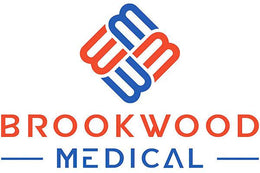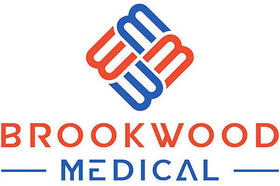DIY Masks vs. Store-Bought: A Protection Showdown

Frequently Asked Questions
1. What is the main purpose of wearing masks during health concerns?
2. What are the key factors to consider when choosing between DIY masks and store-bought masks?
3. What are the advantages of using DIY masks?
4. Why might someone prefer store-bought masks over DIY options?
5. What guidelines should be followed for infant face masks?
As the world continues to grapple with health concerns, wearing protective masks has become a fundamental aspect of our daily lives. The ongoing debate about DIY masks versus store-bought options raises an important question: which offers better protection? This blog post delves into the essential factors to consider when evaluating the effectiveness of DIY masks and store-bought masks, particularly in relation to infant face masks. Understanding these elements can help you make informed decisions that prioritize safety for yourself and your loved ones.
Understanding the Basics of Mask Protection
Before diving into the comparison between DIY and store-bought masks, it’s important to comprehend how masks function in the context of virus transmission. Masks act as a physical barrier that can limit the spread of respiratory droplets, which are a primary mode of transmission for viruses and bacteria. They can help protect the wearer and those around them, especially in crowded spaces.
In this section, let’s explore the factors that affect the efficacy of masks:
Material Composition
The type of material used in a mask significantly impacts its protective capabilities. Masks made from tightly woven fabrics, such as cotton or polypropylene, are known to provide better filtration compared to those made from loose-knit materials. When choosing an infant face mask or any mask, assess the fabric and ensure it meets recommended guidelines for effective filtration.
Fit and Seal
A proper fit is crucial for maximizing mask effectiveness. Masks should cover the nose and mouth completely, with minimal gaps between the mask and the wearer’s face. This is especially critical for infant face masks, as children have different face shapes and sizes compared to adults. A well-fitted mask will help eliminate any leakage of air around the edges, boosting its protective quality.
The Advantages of DIY Masks
DIY masks have surged in popularity, particularly during shortages of commercially available options. Here are some potential benefits of making your own masks:
Customization
One appealing aspect of DIY masks is the ability to customize them to fit personal preferences. You can select fabrics, colors, and patterns that reflect your style. Additionally, you can create a mask specifically sized for infants, ensuring comfort for your little one.
Cost-Effectiveness
Creating your own masks can be cost-effective, particularly for families needing multiple masks or various sizes, like infant face masks. You can use existing materials at home, which can also reduce waste.
Empowerment Through Creation
Making your own masks offers a sense of empowerment and creativity. Engaging in DIY projects can be a positive way to contribute to community health, especially when shared with friends and family.
Weighing the Point of Store-Bought Masks
While DIY masks have their merits, store-bought options also present unique advantages. Here are some reasons why many opt for commercially produced masks:
Standardized Quality and Testing
Store-bought masks are often produced under strict quality control measures and are frequently tested for effectiveness against airborne particles. Brands often follow specific guidelines set by health authorities, ensuring that the masks provide adequate protection.
Convenience
The convenience of purchasing masks cannot be overlooked. With various styles and sizes readily available, including infant face masks, you can find options that suit your family's needs without the time commitment of creating them from scratch.
Consistent Fit
Many store-bought masks come in various sizes designed for different age groups and face shapes, improving the guarantee of a proper fit. They often include features like adjustable ear loops or nose wires, which can enhance comfort and performance.
The Safety Debate: CDC and WHO Guidelines
It’s vital to keep in mind the guidelines put forth by health authorities such as the Centers for Disease Control and Prevention (CDC) and the World Health Organization (WHO). Both organizations recommend wearing masks as a key defense against the transmission of COVID-19 and other respiratory illnesses.
The CDC emphasizes that masks should:
- Completely cover the nose and mouth
- Fit snugly against the sides of the face
- Be secured with ties or ear loops
- Include at least two layers of fabric
When considering DIY options, ensure that your masks meet these guidelines, especially if they are intended for infants, who may have more delicate respiratory systems.
The Role of Infant Face Masks
When it comes to infant face masks, the same principles of protection and fit apply, but with a heightened focus on safety. Infants are particularly vulnerable to respiratory illnesses, making it crucial that any mask intended for their use adheres to the following:
Soft Materials
Infant face masks should be crafted from soft, breathable materials to ensure comfort and reduce irritation against delicate skin. Look for fabrics that are gentle and hypoallergenic.
Design Considerations
When designing or choosing an infant face mask, it's essential to include features that accommodate tiny faces. Adjustable ear loops or ties can help secure the mask comfortably, while avoiding any choking hazards. Additionally, masks that can be washed and reused are also practical for parents.
Comparing Efficacy: DIY vs. Store-Bought
Ultimately, the efficiency of DIY versus store-bought masks boils down to individual circumstances, preferences, and applications. To aid in your decision-making, let’s examine some factors:
Usage Frequency
If you frequently need to replace masks due to wear or after washing, buying store-bought masks may save time and effort. Conversely, if you enjoy crafting and have the materials on hand, DIY masks could be a great option.
Specific Protection Needs
For individuals with specific health concerns or high exposure risk, such as caregivers for infants, the standardized quality of store-bought masks may provide peace of mind. DIY masks can still play a crucial role, especially when crafted thoughtfully and according to guidelines.
Final Thoughts: Choosing What’s Right for You
When weighing the decision between DIY masks and store-bought options, it’s essential to consider your circumstances, the primary users (including your little ones), and your commitment to safety and comfort. Regardless of your choice, remember that the ultimate priority is to ensure everyone, including infants, has proper protection to reduce transmission risks.
As you navigate through this decision, educating yourself about the science of masks will empower you to make well-informed choices for your family. Whether you opt for the creativity of a DIY mask or the convenience of a store-bought option, staying safe and healthy is the most important goal. Just remember, every small step counts in contributing to overall well-being! Stay safe and mask up!






